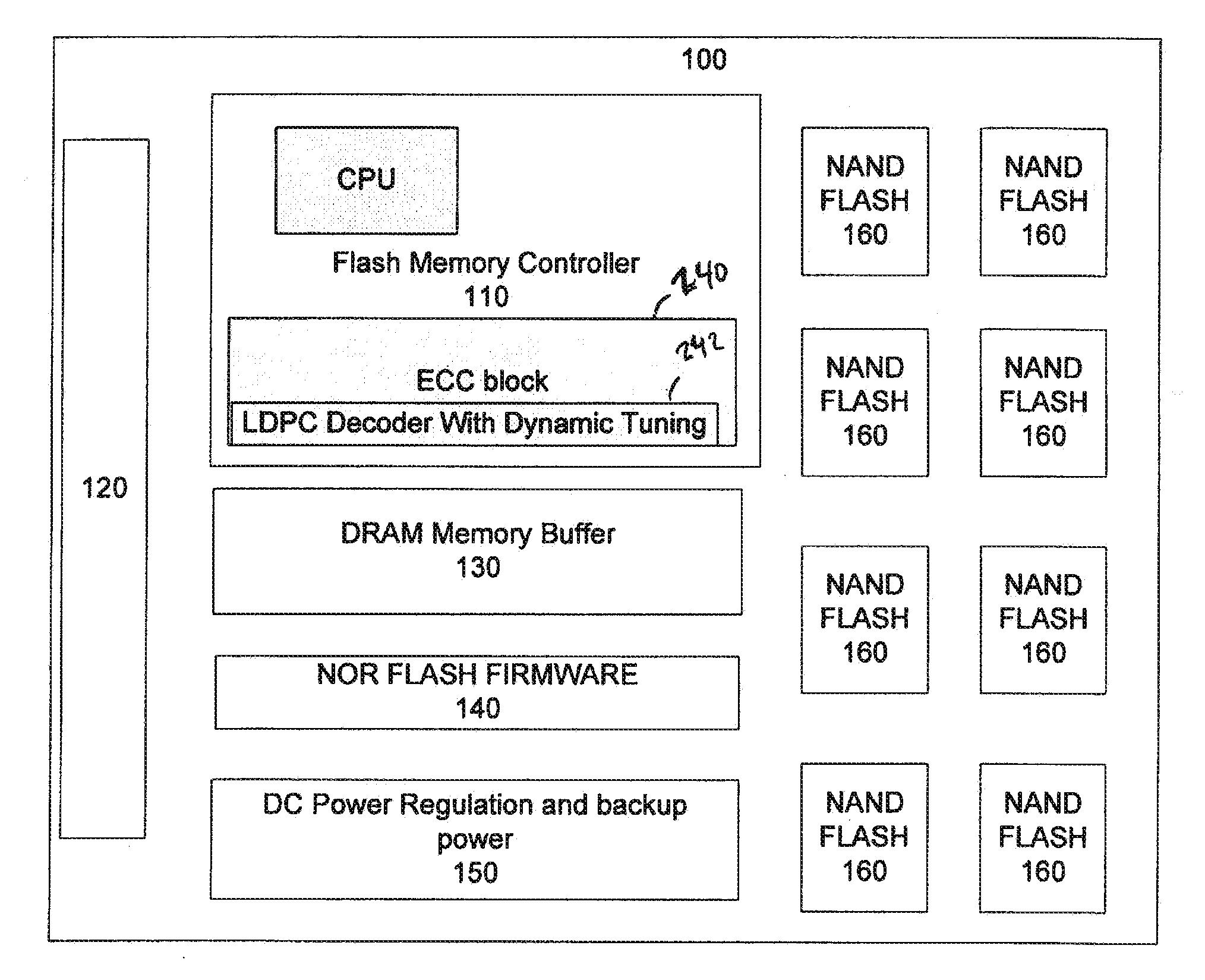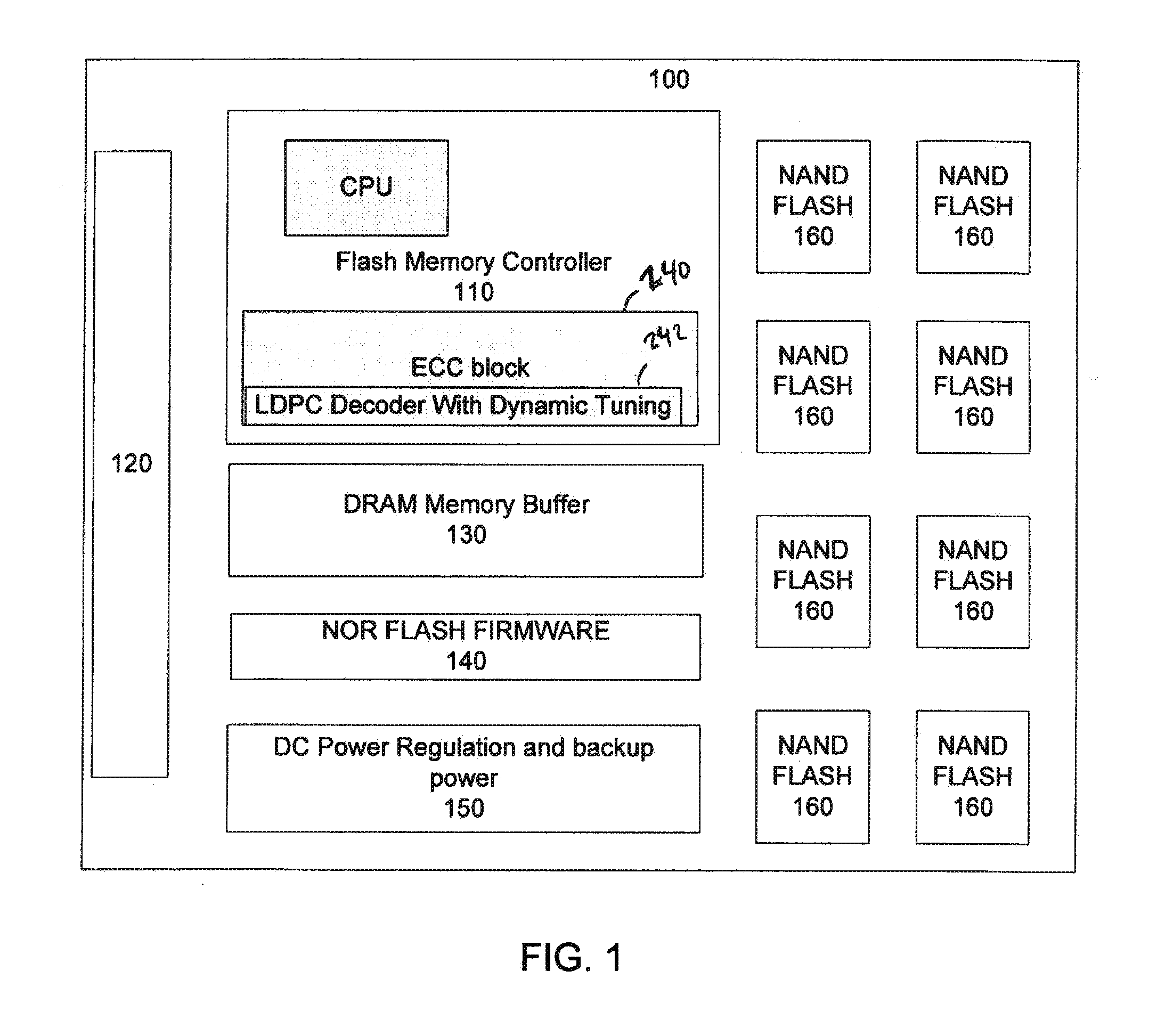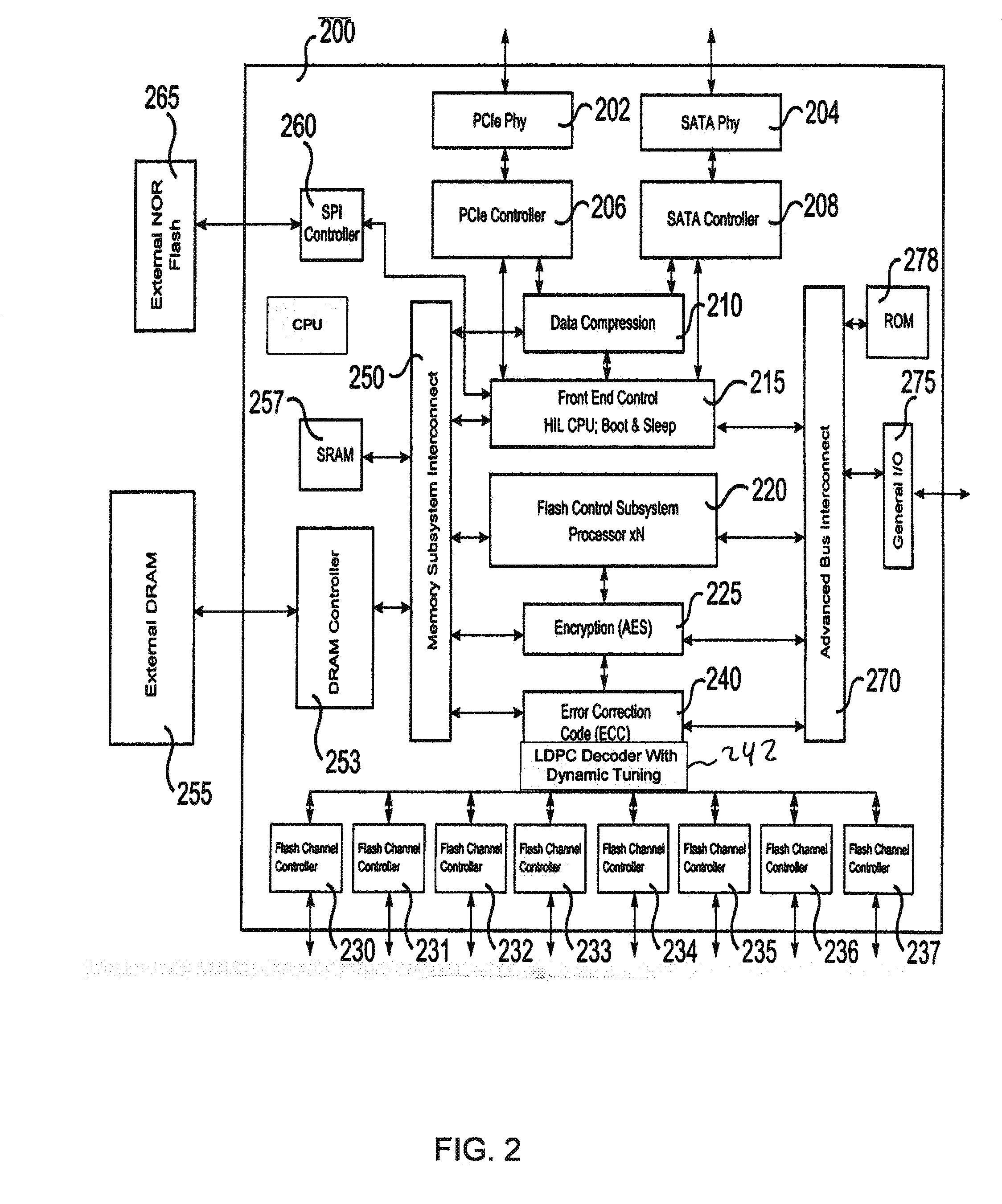Error correction is necessary due to the nature of the technology where reliability and endurance become increasing problems as flash density increases.
However, the mechanism for
programming a stored charge is relatively imprecise.
Further, with repeated erasure and re-
programming, flash cells deteriorate over time and exhibit increased propensity to
cell variations, until finally the cells may fail completely.
The stored charge may also be subject to modification due to effects such as leakage of charge over time due to imperfections in the insulating or
semiconductor layers comprising the
cell, or there may be additional charge variations due to so-called ‘disturb’ effects where adjacent cells being programmed or read may result in addition or leakage of charge to / from surrounding adjacent cells due to
parasitic capacitance coupling and other effects.
In effect a read error would occur.
Equally, a
cell that was not programmed might accumulate sufficient charge due to statistical and random effects that makes the cell appear on reading to be programmed, causing a read error in the opposite direction.
This problem is compounded by the trend to move from storing a single bit per cell in SLC (
single level cell) memory towards storing 2 or 3 bits per cell in MLC (
multi level cell) and TLC (triple level cell).
The net result is that with multiple bits per cell, read errors become more prevalent.
However, the greater requirements placed on the ability to cope with greater error rates in more dense NAND flash memories, along with greater requirements for longer memory endurance in
enterprise computing applications as opposed to
consumer applications, has meant that BCH codes have become incapable of being economically or feasibly scaled to meet the new requirements.
However they suffer the
disadvantage that decoding is a more complex and iterative process which may not converge to an exact answer.
However, this method results in a much slower overall read operation, with much increased read latency considerably reducing the read I / O bandwidth.
As the
flash memory ages and the error rates increase, the decoding capability is increased if soft-decision decoding is employed as more information is provided to the decoder as to the likelihood of which bits may be in error, but at the expense of increased read latency and reduced read performance.
In particular, this may happen even if there are only a low number of errors in the page, which is more likely to happen early in the life of a
NAND flash memory when error rates are low.
If the decoding does not converge on a solution, this means that no information can be discerned with any certainty about any of the bits in the whole page which may be in error, effectively resulting in the whole page being rejected and a page read error being returned, which is a major failure in the read process.
It is only when the memory ages or data is retained for long periods that error rates rise to such an extent that the error correction cannot cope.
In soft-decision decoding, the resulting page error rate is very dependent on the quality (accuracy) of the
soft information.
However, it is known, for example, that bit positions in flash pages may have asymmetrical error properties, where the likelihood of a ‘0’ written to the flash turning into a ‘1’ is very different from the likelihood of a ‘1’ becoming a ‘0’.
Also, error properties may vary between odd and even flash pages and the position of a page within a flash data block.
Although based on different technologies, these memories also suffer from
memory cell corruption and data read errors, where the use of LDPC using soft-decision decoding may be appropriate as an error
correction technique.
 Login to View More
Login to View More  Login to View More
Login to View More 


